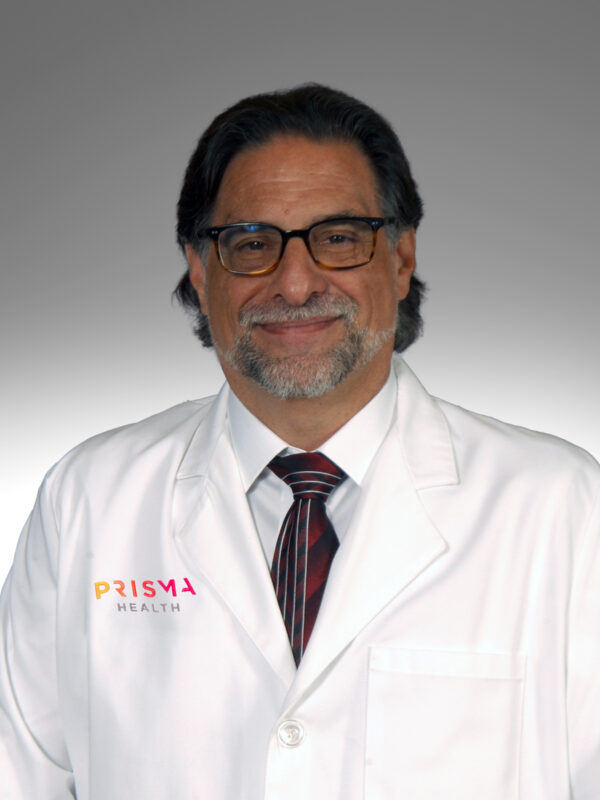Fatty liver disease and diabetes
Almost 30% of Americans have fatty liver disease, a potentially serious medical condition which happens when too much fat builds up in the liver. Unfortunately, due to a lack of early symptoms, many don’t know they have it. If you have diabetes, you have an increased chance of developing fatty liver disease.
Hepatologist Gary A. Abrams, MD, explained the connection between fatty liver disease and diabetes, and what you can do to lower your risk of developing fatty liver disease.
What is fatty liver disease, exactly?
Fatty liver disease occurs when more than 5% of your liver’s weight is from fat. Originally named non-alcoholic fatty liver disease in 1982, the condition was recently renamed metabolic dysfunction associated steatotic liver disease (MASLD).
“Over the decades, the word alcohol stigmatized patients with this condition even though it had nothing to do with their condition,” Dr. Abrams explained. “So, now the umbrella term is called steatotic liver disease. Steatosis is essentially excess fat in the liver.”
MASLD is commonly associated with obesity as well as metabolic conditions such as hypertension and diabetes. A more severe form of fatty liver disease is metabolic associated steatohepatitis, or MASH, which occurs when there’s inflammation and liver cell injury. This liver injury can progress to developing liver fibrosis and is a major risk factor for cirrhosis and liver cancer. Almost 30% of people with fatty liver and MASH will develop fibrosis.
Dr. Abrams explained steatotic liver disease as a spectrum.
“On a liver biopsy, if there’s just fat and inflammation, we call it simple fatty liver. We don’t call it a progressive condition yet. If there’s fat with inflammation and ballooning liver cell injury, that’s MASH. When we see excess liver collagen, that’s fibrosis and the last stage is cirrhosis.”
Who is at risk for fatty liver disease?
Adult risk factors include:
- Overweight or obesity. Over 90% of individuals who are at least 70 pounds overweight with medical conditions or 100 pounds overweight, have fatty liver.
- Diabetes. According to the Centers for Disease Control and Prevention (CDC), up to 70% of people with Type 2 diabetes also have steatotic liver disease.
- Hyperlipidemia (high fat in the blood, such as cholesterol or triglycerides).
- High blood pressure.
Why does overweight and obesity put you at risk for fatty liver disease?
“When you’re overweight, your fat cells don’t need to store all the fat that is being converted from the calories you’re taking in, so those fat cells are going to release fatty acids,” Dr. Abrams said.
Insulin resistance, or prediabetes, also causes a release of excess fatty acids to the liver. This excess cannot be utilized, and they form into a fat droplet that sits inside your liver cell. That’s the first step of fatty liver disease.
The next step is lipotoxicity, which is when fatty acids start causing injury to the cells. When the liver cells die, stellate cells want to heal the liver by producing collagen at the site of injury. But if you’re continually turning on the stellate cell, it’s going to make excess collagen which leads to the development of fibrosis which can progress into cirrhosis.
What are the signs and symptoms of fatty liver disease?
Most people don’t have any signs or symptoms, so fatty liver disease is usually discovered because of another complaint.
“If you have an ultrasound because you’re having pain or you’re taking a statin and have elevated liver enzymes, they might find via ultrasound that you have fatty liver,” Dr. Abrams said. “You need about 20 to 30% of fat in the liver for ultrasound to pick it up, and anything over 5% is fatty liver.”
That’s why screening is important. This is done by first testing your liver enzymes with a simple blood test. The test results, along with your age, are used to calculate a score, called the Fibrosis-4 or FIB-4.
- If your FIB-4 is less than 1.3 and you are under 65 years old, or if your FIB-4 is less than 2.0 and you’re over 65 years old, you’re low risk. Your doctor will do a follow-up blood test in another couple of years.
- If your FIB-4 is greater than 1.3 (or 2.0 over 65 years old), you’re at medium risk and you’ll be sent for a Fibroscan or an Enhanced Liver Fibrosis (ELF) blood test.
- If your FIB-4 is greater than 2.67, you’re at high risk and you’ll be referred to a hepatologist.
“The American Gastroenterology Association recently updated MAFLD guidelines recommending that all Type 2 diabetics go straight for a Fibroscan and not bother with the FIB-4,” Dr. Abrams said.
A Fibroscan is a non-invasive test that uses ultrasound to measure liver stiffness and fat.
This change in the guidelines is because studies have shown that the FIB-4 test underestimated the amount of fibrosis, and patients with Type 2 diabetes develop more fibrosis than people without diabetes. In another study, people with diabetes had more rapid progression of fibrosis than non-diabetics.
Can you prevent fatty liver disease?
The good news is weight loss can reverse fibrosis and even early onset of cirrhosis.
“Just 10% of weight loss starts to reverse or slow the progression of fibrosis,” Dr. Abrams said. “If you stop the ongoing inflammation of the liver and stop self-injury, then you prevent the progression of fibrosis. We’re learning that liver stiffness is probably a good indicator of the prognosis long term.”
What is the best way to lose weight?
- Diet. The Mediterranean diet, which focuses on eating fish, chicken, vegetables, berries and healthy nuts, is healthy for your heart and your liver.
- Exercise. Exercise is extremely important for your brain and your heart, but exercise by itself will not help you lose much weight. It needs to go hand in hand with diet.
- Medication. Weight loss medications, like Ozempic, have been useful for some patients. “On average, with Ozempic, you can lose around 12% of your weight,” Dr. Abrams said. “Mounjaro is around 14–15%. Eli Lilly has another drug that will probably come out in two or three years that is approaching 24%. That’s almost the same as having bariatric surgery.”
- Surgery. Roux-en-Y gastric bypass is a type of weight loss surgery where the stomach is reduced to the size of a small pouch. Another option is a sleeve gastrectomy where the surgeon staples off part of the stomach, but the rest of the anatomy is the same.
The bottom line about fatty liver disease.
With the increase of obesity nationwide, fatty liver disease is now common, even among children, and it can cause serious damage.
“Unfortunately, 20% of adolescents have this condition,” Dr. Abrams said. “I’ve seen cirrhosis in 20- and 21-year-olds.”
But fatty liver disease can be reversed. The first step is screening.
“Those without diabetes should get a FIB-4 test,” Dr. Abrams said. “If you have Type 2 diabetes, get the Fibroscan or ELF blood test. If your FIB-4 is high, you should also get a Fibroscan. And remember, lifestyle modification can improve all aspects of this condition.”
Need help managing your diabetes?
We offer advanced treatment and education programs to help you live with diabetes in a way that fits your lifestyle.
Learn More

